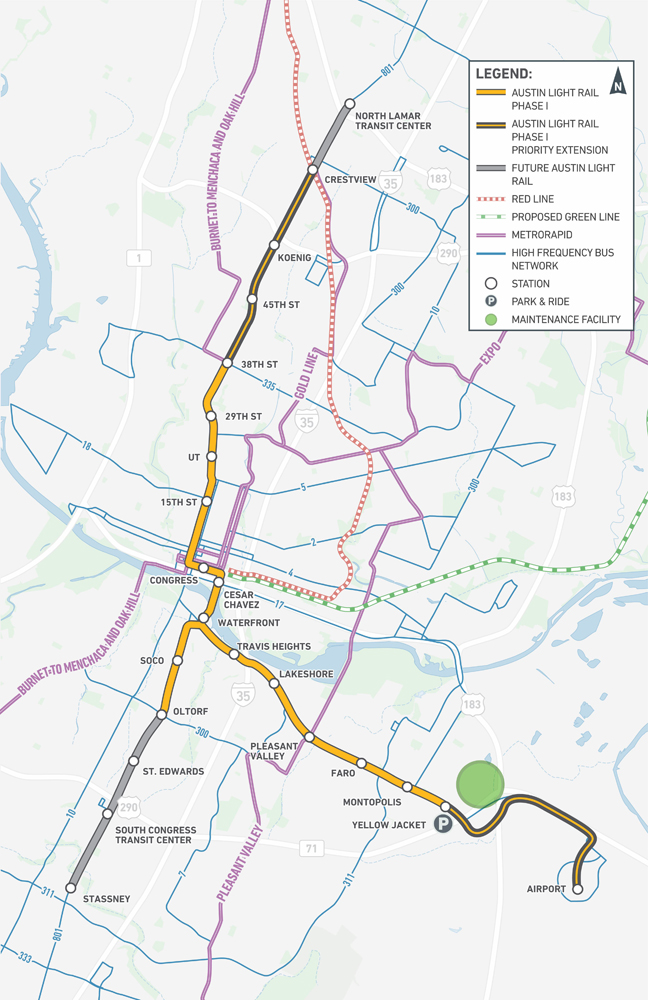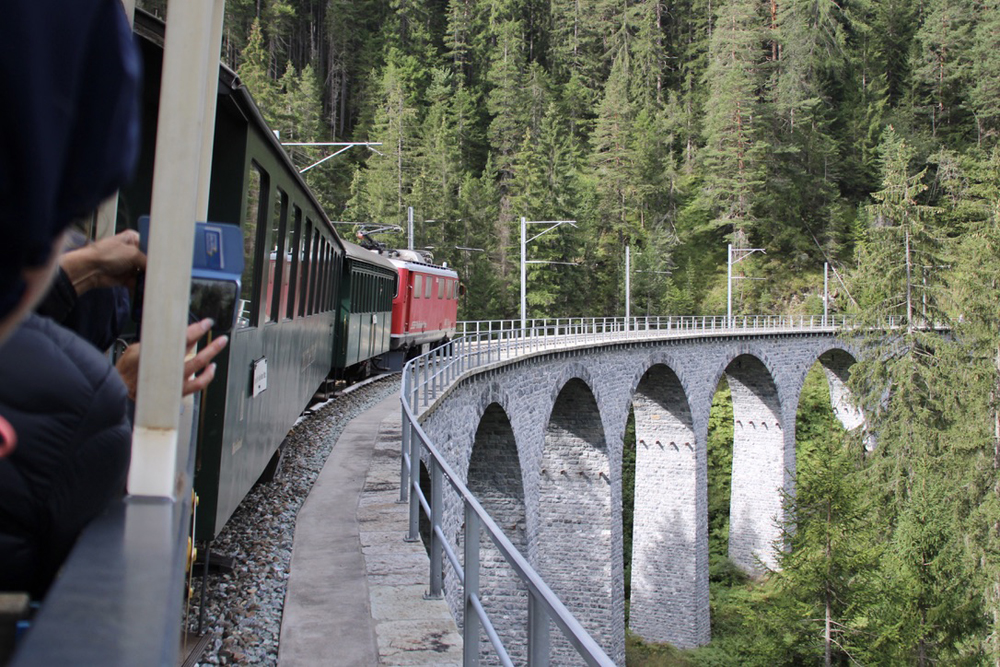
AUSTIN, Texas — Austin’s City Council and the board of directors for its transit agency and the Austin Transit Partnership have formally adopted a plan for Phase I of the city’s revised Project Connect light rail project, a 9.8-mile route to run from 38th Street in the city’s Northwest to Yellow Jacket Lane in the east with a branch to Oltorf Street in the Southwest.
KXAN-TV reports the City Council, Capital Metro board, and Austin Transit Partnership board adopted the plan at a joint meeting Tuesday, following a recommendation made by a month ago by the ATP — an independent entity in charge of implementing the Project Connect program approved by voters in 2020.
The 15-station system is estimated to serve more than 28,500 riders daily and will cost $4.5 billion to $4.8 billion. The new plan comes after plans for the light rail system were paused in July 2022 to account for design changes, inflation, and increased real estate costs. It dramatically reduces the initial plan, removing a $2 billion plan for a downtown subway section, shortening its northern and southern legs, and no longer extending to Austin-Bergstrom International Airport, at least initially. Service to the airport would be a “priority extension,” as would extending the northern leg from 38th Street to Crestview, where it would connect with the commuter rail Red Line. KUT Radio notes the new plan offers less than half the mileage of the original plan and a significantly reduced ridership estimate.
With Tuesday’s approval, project staff will now advance planning and engineering, and finalize a draft environmental impact statement and financing plan. Completion of the environmental document is crucial for federal funding; KXAN reports roughly half of the project costs are expected to be covered by federal money.














This sounds like the scam that New York City would pull on their residents when they proposed these Transit Bond Acts for folks to vote on each Election Day which would put money aside to finance new construction of new lines as well as purchase new railcars and buses. It sounded good until after the good folks of New York City voted Yes in good faith only to find out later that the promised money for these transit improvements was used to pay for new union contracts and salaries for transit official and not a cent spent for the promised construction or new equipment. After several years of this Election Day trickery and scams New Yorkers got smart and voted against these transit bond issues. It used to be that when the federal government gave transit grants to various cities with the express purpose of using that money solely for the intention of new c onstruction or much needed improvements and not for any other purpose. Any money not used for its intended purpose or left over money had to be returned to the government or risk fines and loss of any future grants. It always works out that the citizens and residents are the ultimate losers and left holding the bag when these cities and towns do their own thing or change the orginal plans to suit their own selfish purposes
Joseph C. Markfelder
Austin voters passed the full plan in 2020. Whittling down the system is not what voters wanted, and is a dishonest way of going about this. This significantly decreases its usability. Construction costs always go up over time. The best time to build this was yesterday. Second best time to build is today.
Miles,
“Bait & Switch” is nothing new in light-rail planning and in the subsequent votes. Up in the Seattle area, the original Sound Transit ballot measure to the voters back in 1996 promised 21-miles of light rail, from Sea-Tac International Airport (major airport here) up to downtown Seattle, tunneled through Capitol Hill (east of downtown) and then on up to the University District (where the University of Washington is located). Total length: 21 miles, the 1996 ballot said it would cost $2.4B and would be completed by year 2000.
Weeeell,…….what happened was, they had done no engineering on the tunneling needed to go through Capitol Hill and on up to the U-District and the engineering challenges of that tunneling blew up their Light-rail budget. Nine years later from the originally promised opening date (2000/2009) they finally completed the downtown Seattle – Sea-Tac Airport LINK light rail line (14 miles) for double the original cost-estimate of $2.4B. The downtown-to-Capitol Hill – U-District Link Light Rail Line was subsequently included in the ‘ST-2’ package voted on, and approved by the voters, during the 2008 presidential election cycle.
A subsequent “ST-3” package went out to the voters in the 2016 election cycle, for an even larger light-rail package ($54B) and did in fact passed.
So…., if ST delivers all of the promised north-south/east-west (Seattle-to-the eastside) light rail lines promised in the various ST packages, there will be over 100+ miles of “light rail” serving this region, but at a rather considerable cost (over $116B or so, with financing and inflation). Maybe all of these light-rail lines will do some good in terms of offering transportation “options” to commuters, though it won’t reduce the growing traffic congestion that will be really bad by 2040/2050.
Then again, by 2050, who knows what travel-patterns will be like and how people will be travelling around (autonomous vehicles anyone?) and so the 100+ miles of light-rail built by Sound Transit will be a ‘White Elephant’ by then….?
And of course, three of the major Sound Transit LINL light-rail N/S and E/W lines are already behind schedule and over-budget ……
Good luck, Austin!
Nashville, Indianapolis and San Antonio will be left in the dust in light rail development.